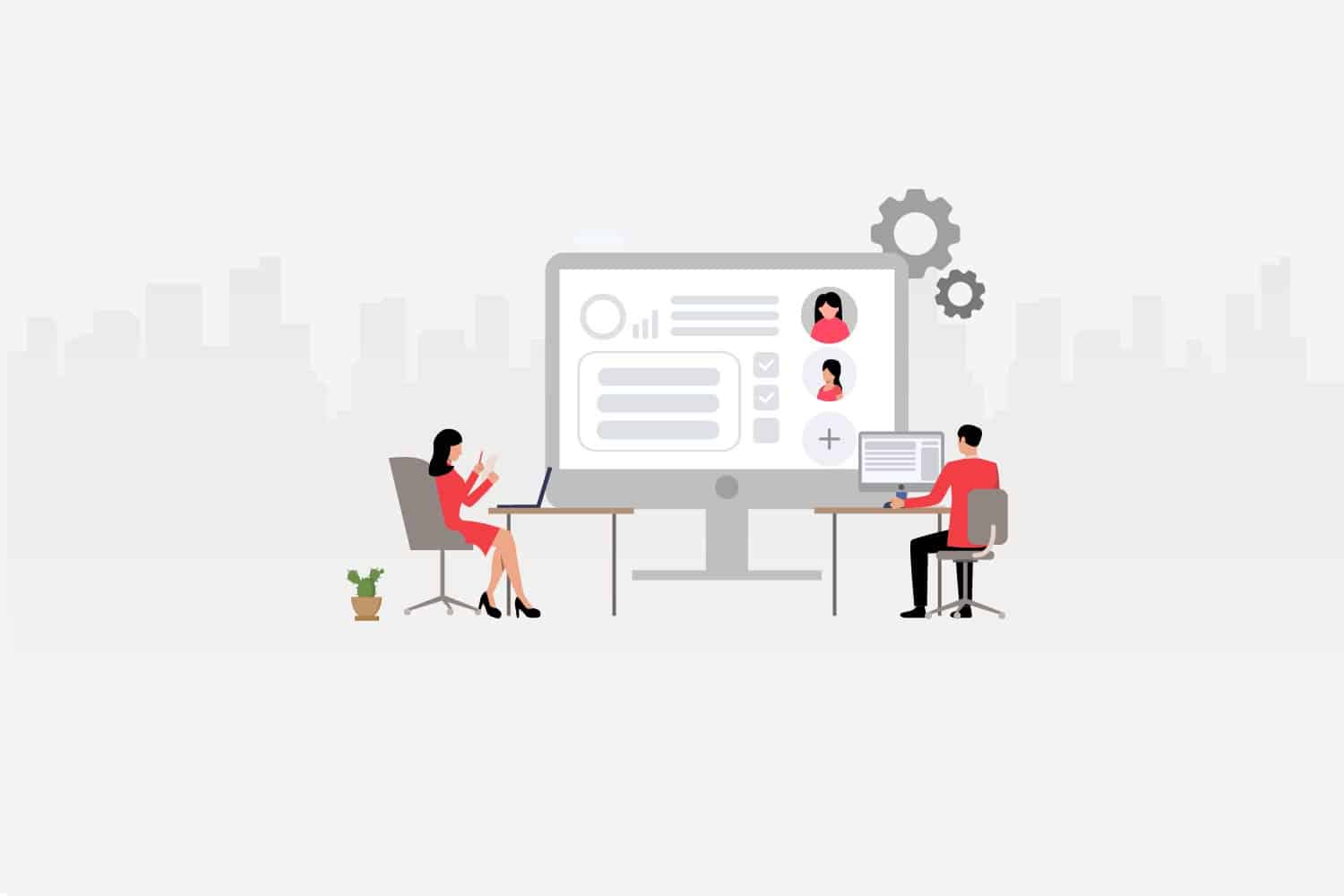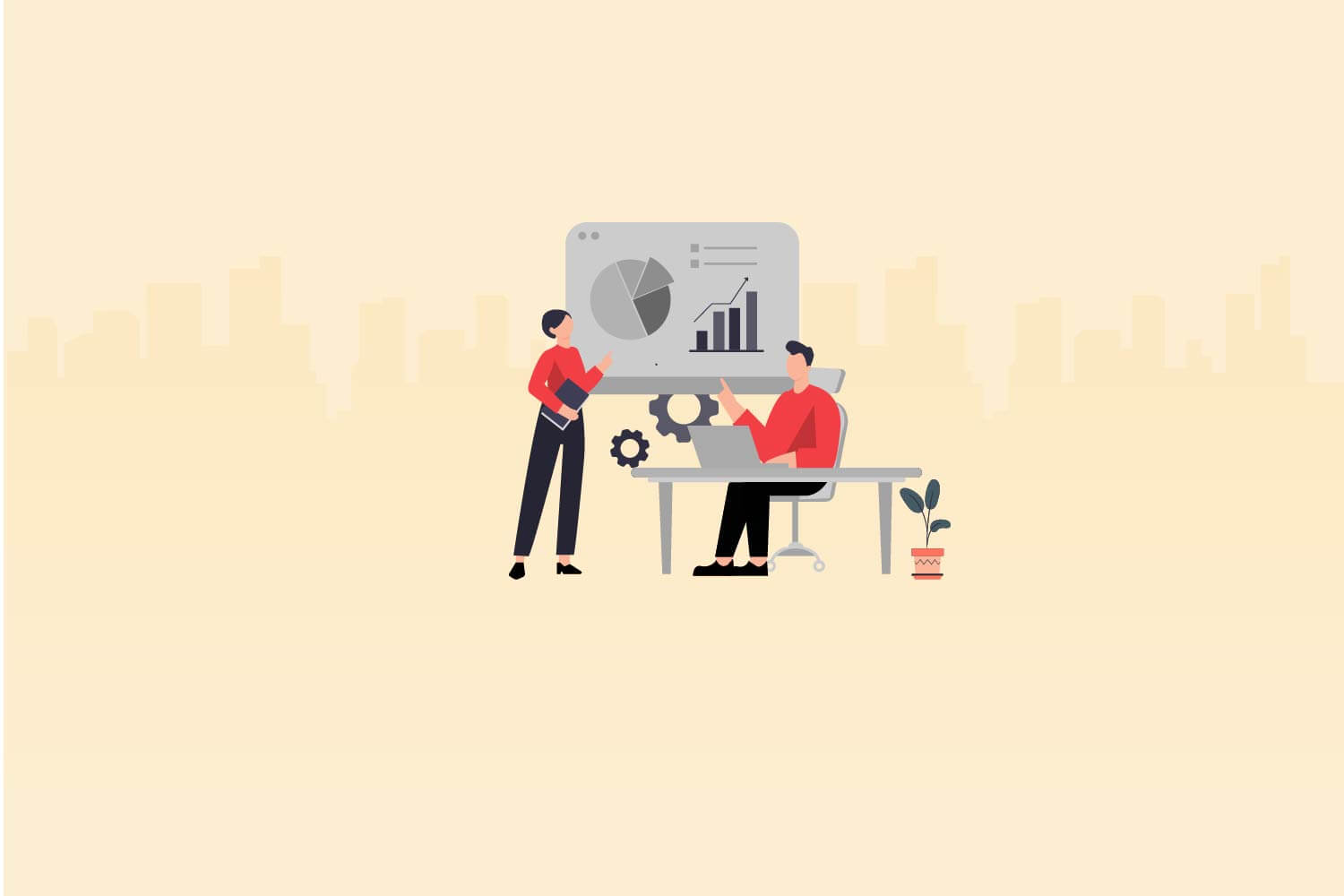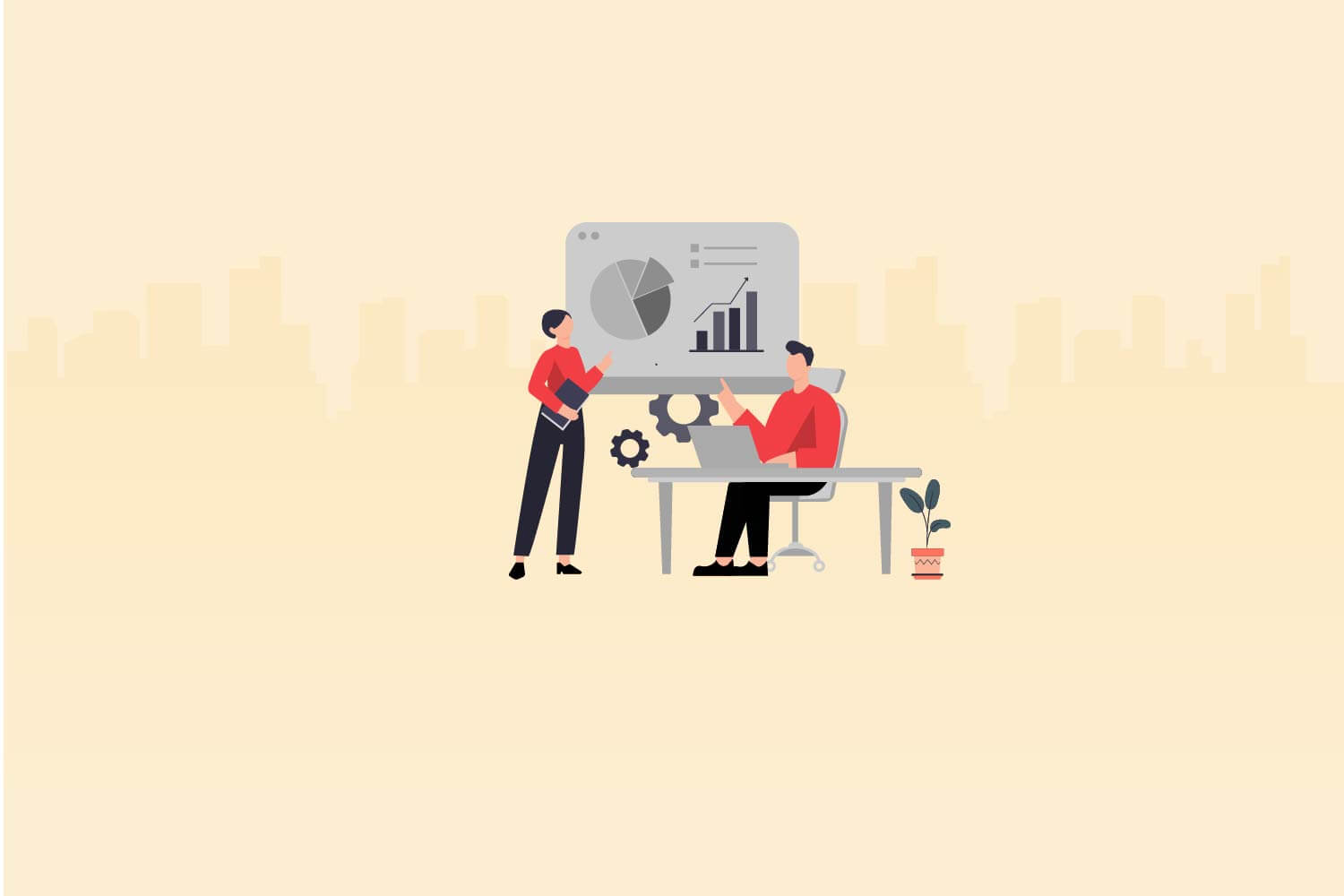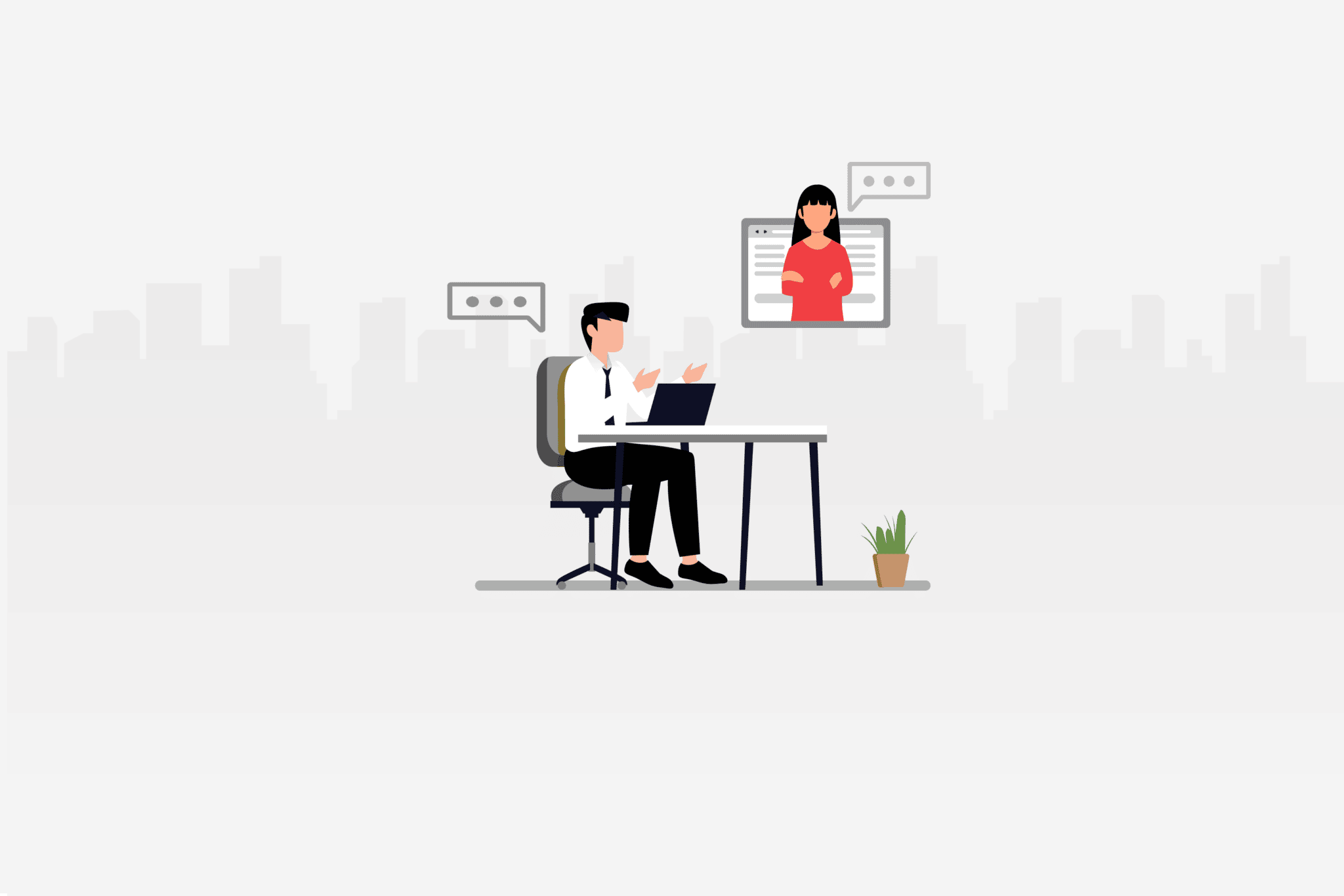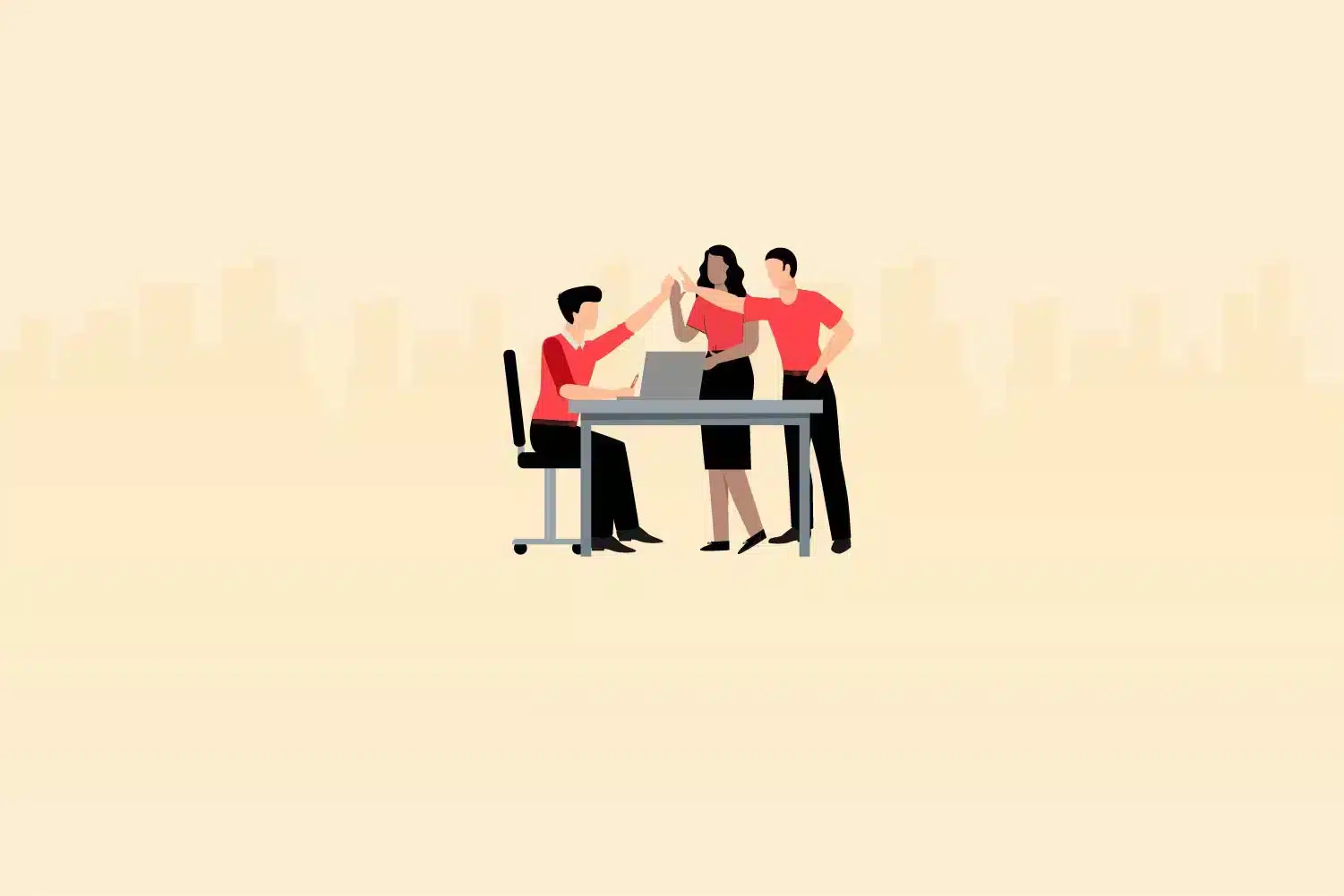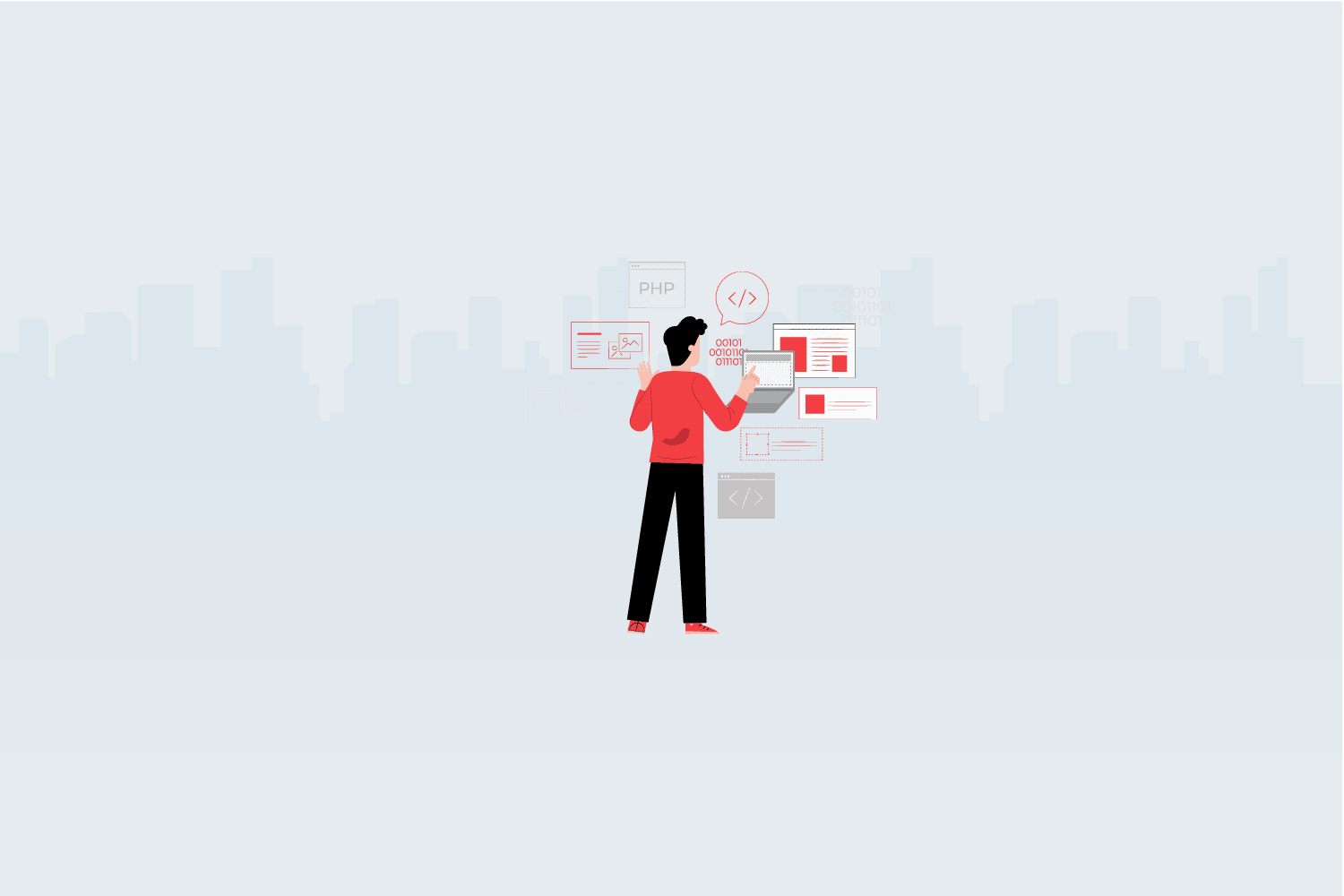In today’s fast-paced and highly competitive business landscape, having a top-notch user experience (UX) is no longer just a nice-to-have; it’s a must-have. A well-designed user interface (UI) and UX can mean the difference between a successful product or service and one that falls flat. That’s why hiring a skilled UI/UX designer is more important than ever.
As a recruiter or employer, finding the right fit for your team can be a daunting task. There are many factors to consider, from technical abilities to cultural fit, and it can be difficult to know where to start. But with the right approach and a well-structured hiring process, you can find the perfect UI/UX designer for your team.
One important fact to keep in mind is that the demand for UI/UX designers is on the rise. According to a recent report by Burning Glass Technologies, demand for UI/UX designers has increased by over 35% in the last five years and shows no signs of slowing down. This trend highlights the importance of having a strong and talented UI/UX design team in order to stay ahead of the competition.
In this guide, we’ll explore the various steps involved in hiring a UI/UX designer, from creating a strong job description to making the right hire. With the right approach, you can find the perfect fit for your team and bring in a UI/UX designer who will make a lasting impact on your company.
Role of UI/UX design in today’s market
In today’s fast-paced digital world, having a visually appealing and user-friendly website or application is no longer just a nice-to-have, but rather a necessary factor for businesses to stay competitive. This is where the role of a UI/UX designer comes into play. UI/UX design refers to the design of the user interface (UI) and user experience (UX) of a digital product.
A UI/UX designer is responsible for creating intuitive, visually appealing, and easy-to-use interfaces that engage and retain users. They are the ones who bridge the gap between form and function, ensuring that a product not only looks good but also delivers an exceptional user experience. As the demand for digital products continues to grow, the need for skilled UI/UX designers has become increasingly important.
In this guide, we will discuss the vital role that UI/UX design plays in today’s market and the key skills and qualifications that a UI/UX designer should possess. We will also delve into the hiring process and provide valuable tips for recruiters and employers looking to bring on a UI/UX designer to their team. The ultimate goal of this guide is to help you find the right fit for your organization, someone who will bring their expertise and creativity to help you achieve your digital goals and stay ahead of the competition.
Defining the skills and qualifications of a UI/UX designer
UI/UX design is a multidisciplinary field that requires a combination of technical and creative skills, as well as a deep understanding of user behavior and expectations. When hiring a UI/UX designer, it’s crucial to understand the specific skills and qualifications that are necessary for success in this role.
Technical skills
A UI/UX designer should have a solid understanding of design tools such as Sketch, Adobe Creative Suite, Figma, and InVision, as well as knowledge of HTML, CSS, and JavaScript. Additionally, they should be familiar with the principles of responsive design and have experience creating wireframes, prototypes, and design systems.
User research and analysis
A UI/UX designer should be able to conduct user research and analyze data to inform their design decisions. This includes conducting user surveys, creating personas, and testing prototypes.
Design thinking
A UI/UX designer should have a design-thinking mindset, meaning they are able to approach problems creatively and consider the user’s perspective. They should be able to empathize with users, identify pain points, and find solutions that improve the overall user experience.
Communication skills
A UI/UX designer should be able to effectively communicate their design decisions and the reasoning behind them, both to team members and stakeholders. They should also be able to collaborate with developers and other designers to ensure that their designs are feasible and meet business goals.
Adaptability
A UI/UX designer should be adaptable and open to feedback, as well as able to pivot their designs based on new information or changes in project requirements.
Portfolio
A UI/UX designer should have a strong portfolio that showcases their design process and problem-solving skills. It should include examples of their wireframes, prototypes, and final designs, as well as the results of any user testing they have conducted.
When evaluating potential candidates, it’s important to consider both their technical skills and their personal qualities, such as their creativity, collaboration skills, and adaptability. A UI/UX designer with a strong portfolio, solid technical skills, and an ability to think outside the box can bring immense value to your team and help drive the success of your digital products.
The importance of cultural fit in hiring a UI/UX designer
When hiring a UI/UX designer, it’s important to not only assess their technical skills and qualifications but also their cultural fit within your organization. Cultural fit refers to the compatibility of an individual’s values, attitudes, and behaviors with those of the company. A UI/UX designer who is a good fit culturally will not only bring their expertise and creativity to the table but will also be able to collaborate effectively with other team members and contribute positively to the company culture.
Shared values
A UI/UX designer who shares the company’s values and beliefs is more likely to be committed to the company’s goals and mission. This alignment of values leads to greater job satisfaction and a sense of purpose for the designer.
Communication style
A UI/UX designer with a compatible communication style is more likely to work well with other team members, understand the needs of stakeholders, and be able to effectively communicate their design decisions.
Work style
A UI/UX designer with a compatible work style will be more likely to fit in with the pace and expectations of the team. For example, if the team values collaboration and open communication, a UI/UX designer who prefers to work independently may not be a good fit.
Problem-solving approach
A UI/UX designer who approaches problem-solving in a way that is compatible with the team is more likely to be able to contribute effectively to the design process. For example, if the team values creative, outside-the-box thinking, a UI/UX designer who relies solely on established design patterns may not be a good fit.
It’s important to assess cultural fit during the hiring process, as it can greatly impact the success of the individual and the team as a whole. Some methods for evaluating cultural fit include behavioral interviews, cultural assessments, and reference checks. By finding a UI/UX designer who is not only skilled and qualified but also a good cultural fit for your organization, you can ensure that they will bring not only their expertise but also their positive attitude and commitment to the team.
Understanding the different UI/UX design processes and methodologies
UI/UX design processes and methodologies can vary greatly depending on the organization and project goals. It’s important for employers to understand these different approaches in order to determine which one is the best fit for their team. Understanding the design process will also help in evaluating the skills and qualifications of potential UI/UX designers during the hiring process.
Agile methodology
This approach emphasizes flexibility and adaptability, allowing for changes in design direction as feedback is received from users and stakeholders. The Agile methodology is particularly well-suited for projects with rapidly changing requirements and short timelines.
Lean methodology
The Lean methodology focuses on eliminating waste and maximizing efficiency in the design process. This approach is particularly useful for startups or organizations that are looking to quickly validate or iterate on their product ideas.
Design thinking
Design Thinking is a user-centered approach that places a strong emphasis on empathy and understanding the needs of users. The design thinking process often involves rapid prototyping and testing to iteratively improve the design.
Waterfall methodology
This approach follows a linear and sequential process, with each phase of the design process being completed before moving on to the next. The Waterfall methodology is often used in projects with well-defined requirements and a clear timeline.
Hybrid approaches
Many organizations choose to implement a hybrid approach, incorporating elements from multiple methodologies to best fit their unique needs and constraints.
It’s important to understand that these methodologies are not mutually exclusive, and many UI/UX designers may have experience with more than one approach. When evaluating a potential UI/UX designer, it’s helpful to ask about their experience with different design processes and which approach they prefer to work with.
Understanding the different UI/UX design processes and methodologies is an important step in finding the right fit for your team. By taking into consideration your project goals, timelines, and team dynamics, you can make an informed decision on which approach is best suited for your organization.
Determining the right experience level for your team
When it comes to hiring a UI/UX designer, the level of experience is an important factor to consider. However, determining the right level of experience for your team can be challenging, as there are many factors to take into account.
Junior or entry-level UI/UX designers
Junior or entry-level designers are typically recent graduates or individuals with less than three years of experience in the field. These designers are often eager to learn and bring fresh perspectives to the team. However, they may not have the same level of experience and expertise as more senior designers.
Mid-level UI/UX designers
Mid-level designers typically have three to five years of experience in the field. They have a solid understanding of design principles and have developed a portfolio of successful projects. They may bring a new level of creativity and energy to your team and can help to mentor junior designers.
Senior UI/UX designers
Senior designers typically have more than five years of experience and are recognized experts in their field. They bring a wealth of knowledge and expertise to the team, and have the ability to lead complex projects from start to finish. However, they may also be more set in their ways and less adaptable to new processes or technologies.
Consider the project requirements
The level of experience you need will depend on the complexity of the project. For simple projects, a junior or entry-level designer may be a good fit. However, for more complex projects, a senior designer with more experience may be required.
Consider the team dynamics
The level of experience you need will also depend on the dynamics of your team. If your team already has experienced designers, a junior or entry-level designer may be a good fit to help mentor and grow the team. If your team is primarily made up of junior designers, a mid-level or senior designer may be required to provide leadership and guidance.
Consider the budget
The level of experience you need will also depend on your budget. Senior designers with more experience typically command higher salaries, so if budget is a concern, a junior or mid-level designer may be a better fit.
Determining the right experience level for your team is a crucial step in finding the right fit for your organization. By taking into consideration the project requirements, team dynamics, and budget, you can make an informed decision on which level of experience is best suited for your team.
Creating a strong job description to attract the right candidates
Creating a strong job description is essential for attracting the right candidates for your UI/UX designer position. A well-crafted job description will help you clearly communicate your expectations and requirements for the role, and help to attract qualified candidates who are a good fit for your team.
Clearly define the role and responsibilities
Start by clearly defining the role and responsibilities of the UI/UX designer position. This should include a summary of the key tasks and responsibilities of the role, as well as any specific requirements, such as experience with certain design software or familiarity with certain design processes.
Highlight required skills and qualifications
Make sure to highlight the required skills and qualifications for the role, such as a bachelor’s degree in design or experience with a specific design software. This will help to attract qualified candidates who have the necessary experience and expertise to succeed in the role.
Emphasize the company culture
Emphasize the company culture and the type of candidate who would be a good fit for your team. For example, if your team values collaboration and creativity, make sure to highlight these traits in the job description. This will help to attract candidates who are a good cultural fit for your organization.
Use keywords for SEO
Optimize the job description for search engines by including relevant keywords, such as “UI/UX designer,” “user experience design,” and “user interface design.” This will help to increase visibility and attract more qualified candidates.
Be Clear About the Compensation and Benefits: Make sure to clearly state the compensation and benefits package for the role, including salary, health insurance, and any other perks or benefits. This will help to attract candidates who are interested in the role and are motivated by the compensation and benefits offered.
Encourage candidate questions
Encourage candidates to ask questions and provide a point of contact for follow-up. This will help to create a positive candidate experience and increase the chances of attracting the right candidates for the role.
Keep the Job description up-to-date
Regularly review and update the job description to ensure that it is accurate and reflects the current needs and requirements of the role.
Creating a strong job description is a crucial step in attracting the right candidates for your UI/UX designer position. By clearly defining the role and responsibilities, highlighting the required skills and qualifications, emphasizing the company culture, and being clear about the compensation and benefits, you can increase the chances of attracting the right fit for your team.
Job description template for hiring UI/UX designer
Job title: UI/UX designer
Location: [city, state]
Job type: [full-time/part-time/contract/remote]
Salary: [salary range]
About the company:
[Brief description of your company, its mission, values, and culture]
About the role:
We are looking for a talented UI/UX Designer to join our growing team. In this role, you will be responsible for creating intuitive, engaging, and aesthetically pleasing user interfaces for our products and services. You will work closely with our product and development teams to design and implement user-centered solutions that meet business and user needs.
Key responsibilities:
- Collaborate with product and development teams to understand business and user requirements
- Conduct user research and testing to inform design decisions
- Design wireframes, prototypes, and high-fidelity mockups to communicate design solutions
- Create user flows, storyboards, and interaction designs to illustrate the user experience
- Present design solutions to stakeholders and incorporate feedback
- Ensure design consistency across all products and platforms
- Stay up-to-date on current design trends and technologies
Qualifications:
- Bachelor’s or Master’s degree in Design, Human-Computer Interaction, or related field
- 3+ years of experience in UX/UI design
- Strong portfolio showcasing your design work
- Excellent visual design skills, including a deep understanding of typography, color, and layout
- Proficiency in design tools such as Sketch, Adobe XD, Figma, or similar
- Experience conducting user research and testing
- Excellent communication, collaboration, and problem-solving skills
- Ability to work in a fast-paced, dynamic environment
What we offer:
[Company benefits, such as health insurance, paid time off, professional development opportunities, etc.]
To apply:
[Instructions on how to apply, such as submitting a resume and portfolio, completing an online application, etc.]
Essential skills to be assessed for hiring UI/UX designers
When assessing the skills of potential UI/UX designers, it is important to consider a wide range of abilities that are critical to success in this role. Some of the key skills to assess include:
| Adobe XD | Figma |
| Vue 2 | Product management |
| UI/UX design | Problem-solving skills |
| Communication skills | Project management skills |
Adobe XD: A UI/UX designer should have a strong understanding of Adobe XD, which is a popular design software used for creating wireframes, prototypes, and visual designs. The designer should be able to effectively use the software to create high-fidelity designs that meet project requirements and effectively communicate design ideas.
Figma: Figma is another popular design software used in the industry. The designer should have a good understanding of Figma’s features and how to effectively use them to create wireframes, prototypes, and visual designs. The designer should also be able to collaborate with others on a design project and effectively communicate design ideas using Figma.
Vue 2: Vue 2 is a progressive JavaScript framework for building user interfaces. The designer should have a strong understanding of Vue 2 and how to use it to create dynamic and interactive designs. This knowledge will allow the designer to effectively translate their design into a functioning product.
Product management: Product management skills are also essential in a UI/UX designer. The designer should understand the product development process and be able to work closely with the development team to ensure the design is effectively translated into a functioning product. The designer should also have strong problem-solving skills and be able to design solutions that meet the needs of both the end user and the business.
Design skills: The ability to create aesthetically pleasing, user-centered designs that meet the needs of the target audience. This includes proficiency in design tools such as Sketch, Adobe Creative Suite, and InVision.
Problem-solving skills: The ability to identify design problems and to generate creative solutions to those problems.
Communication skills: The ability to clearly communicate design decisions and to collaborate effectively with cross-functional teams.
Project management skills: The ability to manage multiple projects and deliver high-quality designs on time and within budget.
By assessing these skills during the hiring process, recruiters and employers can identify the most qualified and capable UI/UX designers for their teams and ensure that they are making informed hiring decisions.
The importance of asking the right interview questions
Asking the right interview questions is crucial for evaluating a candidate’s fit for the UI/UX designer role and for your team. By asking the right questions, you can gain a better understanding of a candidate’s experience, skills, and design philosophy, and determine if they would be a good fit for the role and your organization.
Explore the candidate’s design philosophy
Ask the candidate to describe their design philosophy and approach to user experience design. This will give you insight into their creative process and help you determine if their approach aligns with your team’s design philosophy.
Technical skills assessment
Ask technical questions to assess the candidate’s skills and experience with UI/UX design tools and software. For example, ask them to walk you through their experience with a specific design software or to explain a specific design process they have used in the past.
Problem-solving skills assessment
Ask questions that assess the candidate’s problem-solving skills and ability to think critically about design challenges. For example, ask them to describe a particularly challenging design problem they faced and how they approached solving it.
Collaboration skills assessment
Ask questions that assess the candidate’s ability to work well with others and to collaborate effectively with cross-functional teams. For example, ask them about a time when they had to collaborate with a team to complete a design project.
Communication skills assessment
Ask questions that assess the candidate’s communication skills and ability to articulate their design ideas and concepts. For example, ask them to describe a design project they worked on and to explain their thought process and design decisions.
Determine cultural Fit
Ask questions that assess the candidate’s fit with your team’s culture and values. For example, ask them about their design style and approach and determine if it aligns with your team’s design philosophy.
Consider behavioral questions
Consider using behavioral questions to assess the candidate’s past performance and ability to handle similar situations in the future. For example, ask them to describe a time when they had to handle a difficult design challenge and how they approached it.
Asking the right interview questions is essential for evaluating a candidate’s fit for the UI/UX designer role and for your team. By exploring the candidate’s design philosophy, assessing technical skills, evaluating problem-solving skills, assessing collaboration skills, evaluating communication skills, determining cultural fit, and considering behavioral questions, you can gain a better understanding of a candidate’s fit for the role and your organization.
Top interview questions for hiring UI/UX designer
1. Can you walk us through your design process?
Why it’s important: This question can give you an understanding of the candidate’s design methodologies, research practices, and problem-solving skills.
What to listen for: Listen for their ability to clearly articulate their design process, their understanding of the importance of user research, and how they approach problem-solving.
2. Can you describe a project where you had to balance user needs with business objectives?
Why it’s important: This question can give you an understanding of the candidate’s ability to balance user needs with business requirements, which is a crucial aspect of UI/UX design.
What to listen for: Listen for the candidate’s ability to articulate how they approached the project, their decision-making process, and how they arrived at a solution that met both user and business needs.
3. Can you provide an example of how you have incorporated feedback from stakeholders into your designs?
Why it’s important: This question can help you understand the candidate’s communication skills, ability to take feedback, and willingness to work collaboratively with stakeholders.
What to listen for: Listen for how the candidate communicates feedback, how they incorporate it into their designs, and their approach to handling conflicting feedback.
4. Can you describe a time when you had to pivot in a project due to new information or changes in requirements?
Why it’s important: This question can give you an understanding of the candidate’s adaptability and problem-solving skills in fast-paced and dynamic environments.
What to listen for: Listen for how the candidate approaches change and their ability to pivot quickly while still delivering quality work.
5. Can you walk us through your experience with user testing and research?
Why it’s important: This question can give you an understanding of the candidate’s understanding of user research, testing practices, and ability to validate design decisions with data.
What to listen for: Listen for their understanding of various research methods, how they conduct testing, and how they incorporate feedback into their designs.
6. How do you stay current with the latest design trends and technologies?
Why it’s important: This question can help you determine the candidate’s commitment to professional development and staying up-to-date with the latest design trends and technologies.
What to listen for: Listen for the resources they use to stay informed, their understanding of the latest design trends and technologies, and their approach to continuous learning.
7. Can you describe a complex design problem you solved, and how you approached it?
Why it’s important: This question can give you an understanding of the candidate’s problem-solving skills, creativity, and ability to think outside the box.
What to listen for: Listen for their approach to problem-solving, their ability to articulate the problem and their thought process, and the solution they arrived at.
8. Can you walk us through a design project that you’re particularly proud of and why?
Why it’s important: This question can give you an understanding of the candidate’s design philosophy, design skills, and passion for the field.
What to listen for: Listen for their ability to articulate their thought process, design decisions, and the impact their work had on users.
9. Can you walk me through your experience with A/B testing and user research?
Why it’s important: User research and testing are crucial to validate design decisions and ensure the end product meets user needs.
What to listen for: A candidate with experience conducting user research, creating and executing A/B tests, and incorporating user feedback into their design decisions.
10. Can you tell me about a time when you had to pivot your design solution due to constraints or changing requirements?
Why it’s important: Real-life projects often involve constraints and changing requirements, and a strong UI/UX designer must be able to adapt to these changes.
What to listen for: A candidate who can demonstrate their ability to pivot and find creative solutions within constraints, while still meeting user needs.
What to look for in a UI/UX designer’s work
One of the best ways to evaluate a UI/UX designer’s skills and experience is to review their portfolio. A well-curated portfolio can provide insight into a candidate’s design philosophy, problem-solving skills, and ability to communicate design concepts and ideas. When evaluating portfolios, it’s important to consider the following factors:
Range of experience
Look for a portfolio that showcases a range of design experiences, including different design challenges and design solutions. This will help you assess the candidate’s versatility as a designer and their ability to handle a variety of design projects.
Problem-solving skills
Look for portfolios that demonstrate the candidate’s ability to solve complex design problems and to think critically about design challenges. This will give you an understanding of the candidate’s approach to problem-solving and their ability to think outside the box.
User-centered design
Look for portfolios that showcase the candidate’s focus on user-centered design. This will give you an understanding of the candidate’s ability to design experiences that are centered around the needs and goals of the end-user.
Design process
Look for portfolios that showcase the candidate’s design process, including research, prototyping, and testing. This will give you an understanding of the candidate’s approach to design and their ability to work through the design process from start to finish.
Attention to detail
Look for portfolios that demonstrate the candidate’s attention to detail and their ability to create high-quality, polished designs. This will give you an understanding of the candidate’s ability to produce designs that are visually appealing and well-designed.
Communication skills
Look for portfolios that demonstrate the candidate’s ability to communicate design concepts and ideas. This will give you an understanding of the candidate’s ability to articulate their design decisions and to work effectively with cross-functional teams.
Alignment with your design philosophy
Look for portfolios that align with your team’s design philosophy and approach. This will give you an understanding of the candidate’s fit with your team and their ability to work effectively within your organization.
Evaluating portfolios is an important part of the hiring process for UI/UX designers. By considering the range of experience, problem-solving skills, user-centered design, design process, attention to detail, communication skills, and alignment with your design philosophy, you can gain a better understanding of a candidate’s fit for the role and your organization.
Assessing soft skills: communication, collaboration, and adaptability
In addition to technical skills and design expertise, it’s important to consider a UI/UX designer’s soft skills when evaluating candidates. Soft skills are personal attributes that impact how well a candidate will be able to work with your team, communicate with stakeholders, and adapt to new challenges. When assessing soft skills, it’s important to consider the following factors:
Communication skills assessment
Look for candidates who have strong verbal and written communication skills. UI/UX designers must be able to clearly and effectively communicate design concepts and ideas to stakeholders, team members, and clients.
Collaboration skills assessment
Look for candidates who have experience working effectively with cross-functional teams. UI/UX designers must be able to work closely with developers, product managers, and other stakeholders to bring designs to life.
Adaptability skills assessment
Look for candidates who are adaptable and open to change. The design process is an iterative one, and UI/UX designers must be able to adapt their designs to changing requirements and feedback.
Interpersonal skills assessment
Look for candidates who have strong interpersonal skills and the ability to build positive relationships with others. UI/UX designers must be able to work effectively with team members and stakeholders, and to communicate design decisions and feedback.
Time management skills assessment
Look for candidates who have strong time management skills and the ability to prioritize tasks and meet deadlines. UI/UX designers must be able to balance multiple projects and priorities and to work efficiently.
Emotional intelligence assessment
Look for candidates who have strong emotional intelligence and the ability to understand and manage their emotions and the emotions of others. UI/UX designers must be able to work effectively with team members and stakeholders and to respond to feedback and criticism in a constructive manner.
Creativity skills assessment
Look for candidates who are creative and have a passion for design. UI/UX designers must be able to bring new ideas and fresh perspectives to the design process, and to think outside the box.
Assessing soft skills is an important part of the hiring process for UI/UX designers. By considering factors such as communication skills, collaboration skills, adaptability, interpersonal skills, time management, emotional intelligence, and creativity, you can gain a better understanding of a candidate’s fit for the role and your organization.
Technical skills assessment
When evaluating a UI/UX designer, it’s important to measure their technical abilities to determine if they have the skills and expertise to succeed in the role. Here are some key areas to consider when measuring technical abilities:
Tools: Familiarize yourself with the tools and software used by UI/UX designers. For example, popular tools for UI design include Sketch, Figma, and Adobe XD, while popular tools for UX design include Axure, InVision, and Balsamiq. Look for candidates who have expertise in the tools and software you use, and who are comfortable with new and emerging tools and technologies.
Techniques: Look for candidates who have a strong understanding of UI/UX design techniques, such as wireframing, prototyping, and testing. Ask candidates to demonstrate their expertise in these areas, and to discuss how they have applied these techniques in past projects.
Technical Know-How: Look for candidates who have a solid understanding of key technical concepts in UI/UX design, such as responsive design, accessibility, and user experience testing. Ask candidates to discuss these concepts and how they have applied them in past projects.
Technical Problem-Solving: Look for candidates who have strong problem-solving skills and the ability to think critically about technical challenges in UI/UX design. Ask candidates to describe a technical challenge they faced in a past project, and how they approached and solved the challenge.
Code and Development Skills: Depending on your needs, look for candidates who have experience with HTML, CSS, and JavaScript, and who have a basic understanding of front-end development. This can be especially important for UI/UX designers who will be working closely with developers to bring designs to life.
Measuring technical abilities is a critical step in evaluating UI/UX designers. By considering factors such as talent assessment tools, techniques, technical know-how, technical problem-solving, and code and development skills, you can gain a deeper understanding of a candidate’s technical abilities and fit for the role.
Offering a competitive salary and benefits package
When hiring a UI/UX designer, it’s important to offer a competitive salary and benefits package to attract top talent and keep them motivated and engaged. Here are some key considerations when it comes to compensation and benefits:
Market rates
Research the average salary and benefits for UI/UX designers in your area, and make sure you are offering a competitive rate that is in line with industry standards. You can use websites such as Glassdoor or Payscale to research market rates.
Experience level
Consider the candidate’s experience level when determining their salary. A more experienced candidate may command a higher salary, while a less experienced candidate may be more flexible on compensation.
Benefits
Consider offering a comprehensive benefits package that includes healthcare, retirement plans, paid time off, and other perks. A strong benefits package can be a key factor in attracting top talent and keeping them motivated and engaged.
Flexibility
Consider offering flexible benefits options, such as telecommuting or flexible scheduling, which can be especially important for UI/UX designers who need time to focus on creative projects.
Performance-based bonuses
Consider offering performance-based bonuses or other incentives to reward top performers and keep them motivated.
Professional development
Consider offering professional development opportunities, such as training and certifications, to help your UI/UX designers stay up-to-date with the latest tools and techniques.
Offering a competitive salary and benefits package is an important consideration when hiring a UI/UX designer. By taking the time to research market rates, consider experience level, and offer a comprehensive benefits package and professional development opportunities, you can attract top talent and ensure they are motivated and engaged.
Fostering a supportive work environment for your UI/UX designer
In addition to offering a competitive salary and benefits package, it’s also important to foster a supportive work environment for your UI/UX designer. A positive and supportive work environment can help your designer feel valued, motivated, and engaged, leading to better performance and higher job satisfaction. Here are some key considerations for fostering a supportive work environment:
Clear expectations
Clearly communicate your expectations for the UI/UX designer’s role, responsibilities, and performance, and make sure they understand what success looks like in their role.
Collaborative culture
Encourage collaboration and teamwork among your team, and make sure your UI/UX designer has the opportunity to work closely with other designers, developers, and stakeholders.
Access to resources
Provide your UI/UX designer with access to the resources they need to do their job effectively, including the latest tools, software, and technology.
Open communication
Encourage open and transparent communication between you and your UI/UX designer, and make sure they feel comfortable providing feedback and sharing their ideas.
Autonomy
Allow your UI/UX designer the autonomy to make decisions and take ownership of their projects, while still providing guidance and support when needed.
Recognition and rewards
Regularly recognize and reward your UI/UX designer for their hard work and achievements, and make sure they feel valued and appreciated for their contributions.
Professional development
Encourage and support your UI/UX designer’s professional development, and provide opportunities for growth and advancement within the company.
Fostering a supportive work environment is an important consideration when hiring a UI/UX designer. By creating a collaborative and supportive culture, providing access to resources, encouraging open communication, and supporting professional development, you can create a positive and engaging work environment that attracts and retains top talent.
Making the right UI/UX designer hire
The ultimate goal of your UI/UX designer search is to make the right hire for your team. Hiring the right UI/UX designer can have a significant impact on the success of your projects and the overall growth of your business. To ensure you make the right hire, it’s important to consider the following:
Matching skills and qualifications
Make sure the UI/UX designer you hire has the necessary skills and qualifications to meet the needs of your projects and company. This includes a strong understanding of user-centered design, an eye for aesthetics, and the ability to work with a variety of tools and technologies.
Cultural fit
Consider the UI/UX designer’s personality, values, and work style, and make sure they fit in with your company culture. A good cultural fit can help to build strong working relationships and increase job satisfaction.
Relevant experience
Consider the UI/UX designer’s level of experience, and make sure they have the right amount of experience to meet the needs of your projects. If you’re working on complex projects, you may want to consider hiring a UI/UX designer with more experience.
Communication skills
Good communication skills are essential for success in any role, especially in the field of UI/UX design. Make sure the UI/UX designer you hire has strong written and verbal communication skills, and the ability to work effectively with stakeholders and team members.
Collaborative approach
Consider the UI/UX designer’s approach to collaboration and teamwork. Look for someone who is open to feedback and willing to work with others to achieve common goals.
Adaptability
The field of UI/UX design is constantly evolving, and it’s important to hire someone who is adaptable and able to keep up with new trends and technologies.
Positive attitude
Look for a UI/UX designer with a positive attitude, a passion for their work, and a desire to learn and grow.
Making the right hire is crucial for the success of your projects and company. By considering these key factors and taking the time to find the right fit, you can ensure that you bring in a UI/UX designer who will add value and contribute to the growth of your business.
Streamlining the hiring process with Testlify
Testlify is a talent assessment tool that can greatly assist in the hiring process for UI/UX designers. With its ability to create and administer custom online tests, recruiters and employers can easily assess a candidate’s technical abilities and design knowledge, saving valuable time and resources. Additionally, the results of these tests can provide valuable insights into a candidate’s strengths and weaknesses, helping to make informed hiring decisions. Furthermore, Testlify’s user-friendly interface makes it simple to create and manage tests, ensuring that the hiring process runs smoothly and efficiently. By incorporating Testlify as a talent assessment tool into your UI/UX designer hiring process, you can ensure that you are hiring the best candidates for your team and building a strong foundation for your product’s success.
Wrapping up
Hiring a UI/UX designer for your team is a crucial step in ensuring the success of your projects and the overall growth of your business. The right UI/UX designer can bring a fresh perspective, a wealth of knowledge and experience, and a passion for their work to your team.
By following the steps outlined in this guide, you can find the right fit for your team and bring in a UI/UX designer who will be a valuable asset to your company. From defining the necessary skills and qualifications to assessing soft skills and evaluating portfolios to offering a competitive salary and benefits package, every step of the hiring process is important.
It’s also essential to create a supportive work environment for your UI/UX designer and to foster a culture of growth and development. By investing in your UI/UX design team, you can ensure the success of your projects and drive the growth of your business.
Remember, the ultimate goal of your UI/UX designer search is to make the right hire for your team. With the right approach, you can find the perfect fit and bring in a UI/UX designer who will make a lasting impact on your company.
Take the next step in finding the perfect UI/UX designer for your team by using talent assessment tools like Teslify. Teslify can help you accurately assess the skills and abilities of potential candidates, ensuring a successful and efficient hiring process. Sign up now to learn more about how Teslify can help you find the right fit for your team!
